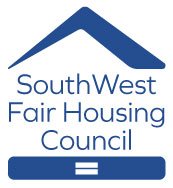Border Colonias: Equity and Access in the Arizona State CDBG Set-Aside Program
Advisor: Paavo Monkkonen Client: Southwest Fair Housing Council Institution: UCLA Department of Urban and Regional Planning
Summary:
This report dives deep into the realities of "Colonias," communities found along the U.S.-Mexico border that have been historically underserved, lacking even the most basic infrastructure such as proper housing, water connections, and broader network access. This in-depth investigation hones in on Colonias within the state of Arizona.
Highlights:
What are Colonias?
Colonias are semi-formal communities along the U.S.-Mexico border that have historically lacked basic needs.
Legislative Efforts for Colonias:
In 1990, the National Affordable Housing Act sought to improve conditions in Colonias through the Community Development Block Grant (CDBG) set-aside funding.
Demographic Analysis:
The research provides an extensive demographic analysis, focusing on Population, Age, Race, Ethnicity, Income, Education, and Housing.
Concerning Findings:
Despite population growth in counties containing Colonias, most Colonias have seen a significant decrease in population, suggesting residents are leaving these areas.
The age demographic of Colonias indicates a growing senior population, potentially leading to care concerns as younger residents move away.
Historically, Colonias have been sites of racial segregation, and they remain racially and ethnically diverse.
Recommendations:
Based on the findings, four significant recommendations are put forth to better the implementation of CDBG funding in Arizona, including:
Creation of a Colonia resident application platform.
Advancing housing opportunities.
Implementing climate change mitigation measures.
Introducing a Colonia project tracking requirement in equity plans according to new HUD guidelines.
As alarming as these findings might seem, they underscore the urgent need for change and improvement in these communities. Delve into the full report to gain a comprehensive understanding of the challenges faced by the Colonias in Arizona and the potential paths forward. If you're passionate about housing rights, urban planning, or community development, this is a must-read.

